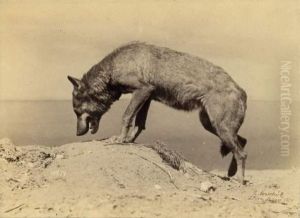Ottomar Anschut Paintings
Ottomar Anschütz was a pioneering German photographer and inventor who played a significant role in the early development of photography and motion picture technology. Born on May 16, 1846, in Lissa (now Leszno, Poland), Anschütz was fascinated with photography from a young age, a time when the medium was still in its infancy and rapidly evolving.
Anschütz's contributions to photography are particularly notable in the realm of high-speed photography and the projection of moving images. He is best known for his work on the development of the 'schnellseher' (fast viewer), a device that could display a series of still images in quick succession to give the illusion of motion. This invention was a precursor to modern motion picture projectors and significantly influenced the field of cinematography.
Throughout his career, Anschütz focused on capturing images of animals and humans in motion, striving to understand and depict the dynamics of movement. His photographs were celebrated for their clarity and precision, which were groundbreaking at the time. He even photographed famous figures like Emperor Wilhelm II of Germany using his fast exposure techniques.
Anschütz also held several patents related to his photographic inventions. His work was widely exhibited, and he received numerous awards and recognition for his contributions to the field of photography. His devices and techniques opened up new possibilities for visual representation and laid the groundwork for the future of film and animation.
Ottomar Anschütz passed away on May 30, 1907, in Berlin, Germany. Though not as widely known as some of his contemporaries, his innovative work in capturing motion profoundly impacted visual culture and the development of the film industry. Today, he is remembered as a visionary who helped to broaden the horizons of photographic art and technology.
